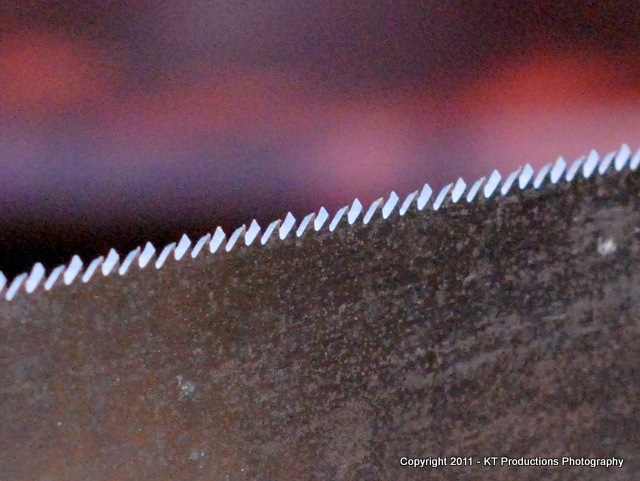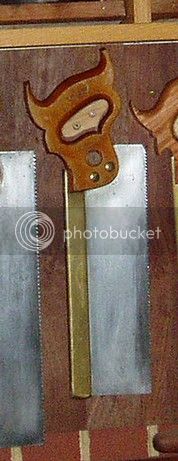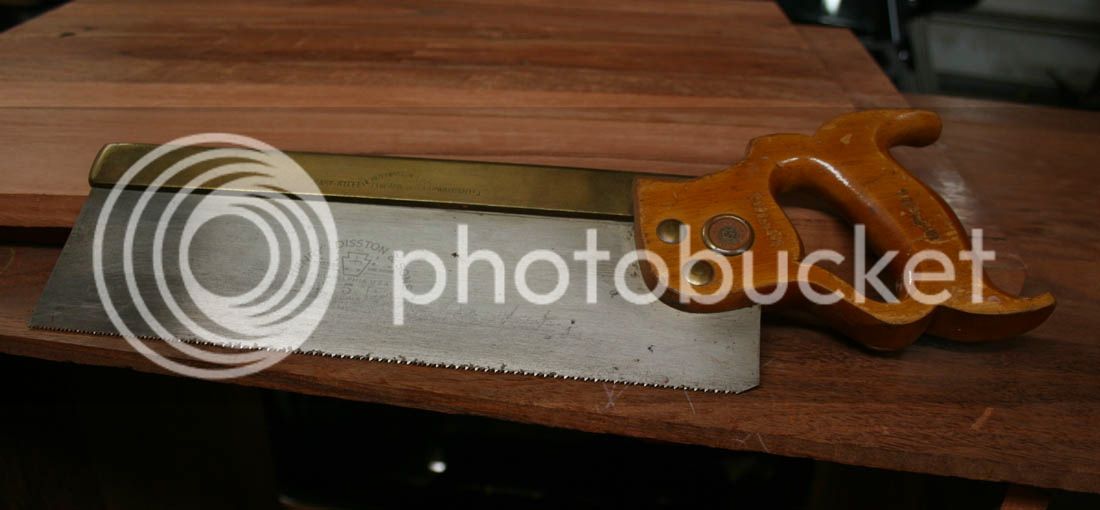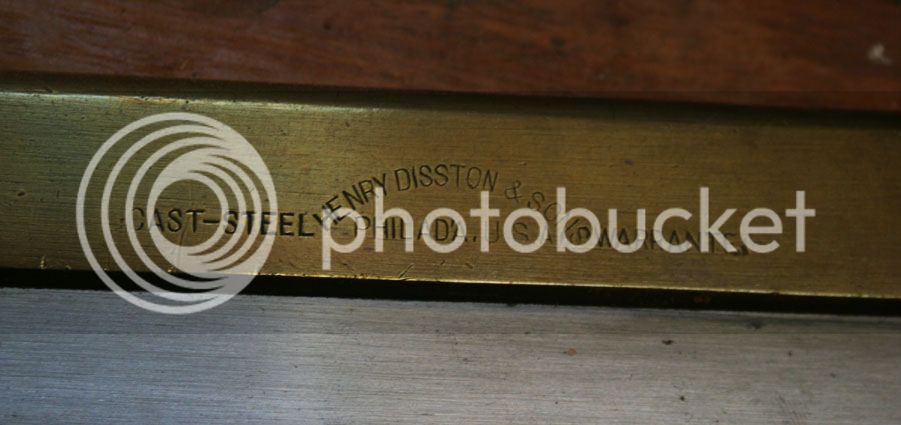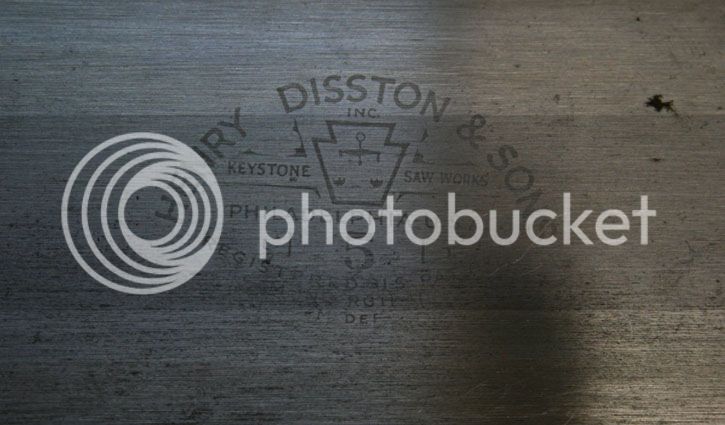Doug B
Shy Tot
I recently inherited this well used Disston saw.

From the lettering on the brass back it looks to be a cast steel, Henry Disston & sons saw made in Philadelphia USA.

The insignia bolt is broken & i was wondering if it was possible to get a replacement. It wont be the end of the world if i can`t as the handle is a little on the small side for my delicate hand :---) so intend to make another handle, therefore i could go for 3 plain bolts, but it would be nice if i could replace the original.

Cheers.
Doug.
Edit. I`d also be interested, if possible, if any one could tell me how i`d go about finding the date of manufacture of this saw.

From the lettering on the brass back it looks to be a cast steel, Henry Disston & sons saw made in Philadelphia USA.

The insignia bolt is broken & i was wondering if it was possible to get a replacement. It wont be the end of the world if i can`t as the handle is a little on the small side for my delicate hand :---) so intend to make another handle, therefore i could go for 3 plain bolts, but it would be nice if i could replace the original.

Cheers.
Doug.
Edit. I`d also be interested, if possible, if any one could tell me how i`d go about finding the date of manufacture of this saw.








